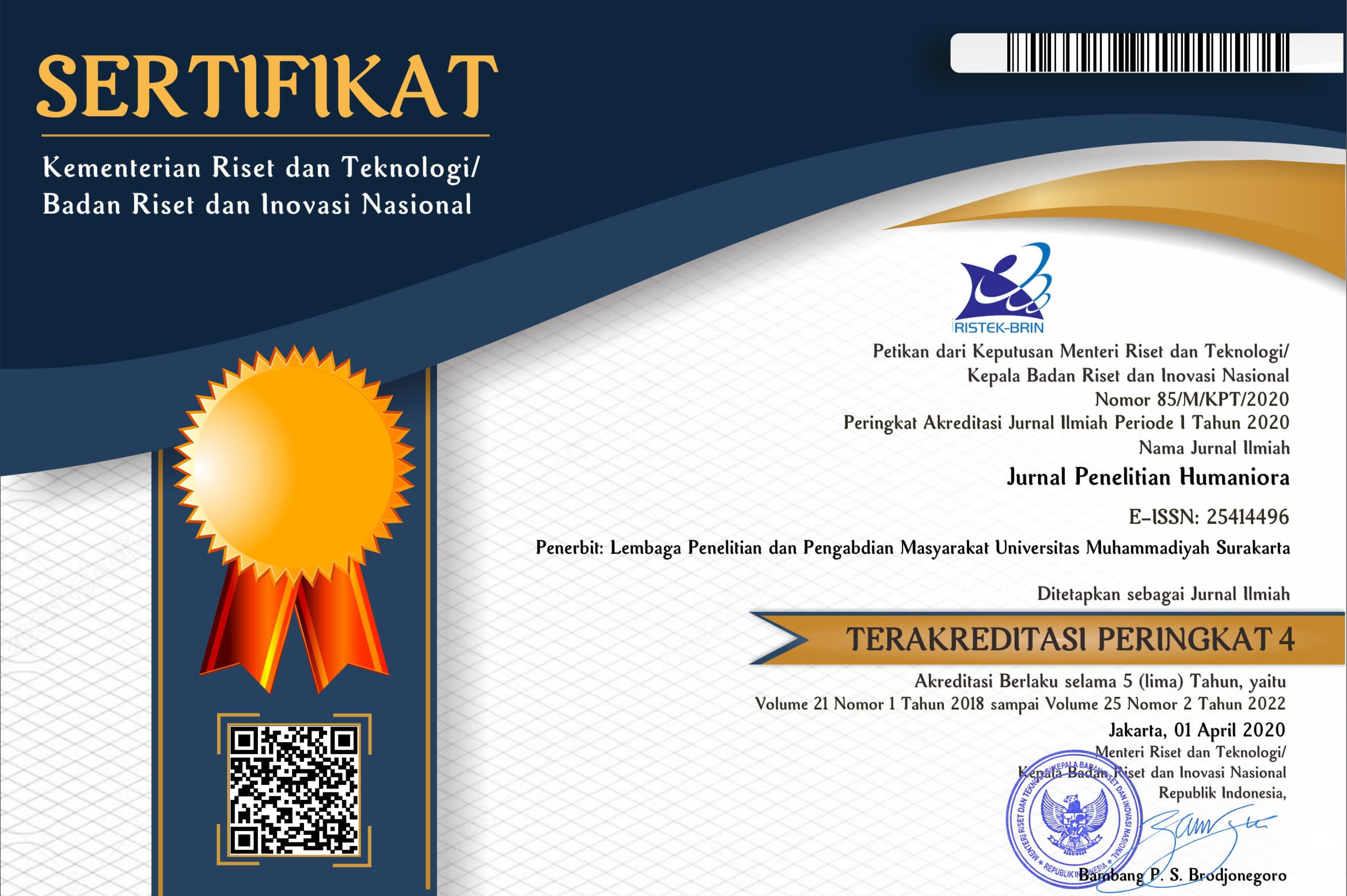ERRORS IN NARRATIVE TEXT COMMITTED BY STUDENTS OF GRADE XI OF VOCATIONAL HIGH SCHOOL STATE 4 SURAKARTA ACADEMIC YEAR 2014/2015
Eko Mulyono(1*)(1) Univeristas Muhammadiyah Surakarta
(*) Corresponding Author
Abstract
Keywords
Full Text:
PDFReferences
Dulay, Heidi.,Burt,Marina.,Krashen,Stephen. 1982. Language Two. New York Oxford: Oxford University Press.
Fauziati, Endang. 2009. Readings on Applied Linguistics: A Handbook for Language Teacher and Teacher Researcher. Surakarta: Era Pustaka Utama.
Hau Tse, Andrew Yau. 2014. A Case Study of Grammatical Errors Made by Malaysian Students. International Journal of Science Commerce and Humanities Volume No 2 No 5. Universiti Tunku Abdul Rahman Faculty of Arts & Social Science, Perak Campus 31900 Kampar: Malaysia.
James, Carl. 1998. Error in Language Learning and Use: Exploring Error Analysis. London: Routledge.
Mohammed, Mohanad Qasim. 2016. Error Analysis: A Study on Grammatical Errors in the Writings of Iraqi EFL Learners. EUROPEAN ACADEMIC RESEARCH Vol. III, ISSN 2286-4822. www.euacademic.org.
Srikandi, Cut Novia. 2009. Borrowing in the Translation of D.H Lawrence’s Lady Chatterley’s Lover into Indonesian. Thesis. University of North Sumatra.
Sugiyono. 2013. Penelitian Kuantitatif, Kualitatif, dan R&D. Bandung: Alfabeta.
WEE, Roselind. 2009. Sources of Errors: An Interplay of Interlingual Influence and Intralingual Factors. European Journal of Social Sciences – Volume 11, Number 2. Universiti Teknologi Mara (UiTM). Jalan Meranek 94300 Kota Samarahan, Sarawak, Malaysia.
Zhang, Meng. 2011. Error Analysis and Interlanguage. Focus Vol.1, pp.85-93.
Article Metrics
Abstract view(s): 928 time(s)PDF: 577 time(s)
Refbacks
- There are currently no refbacks.











